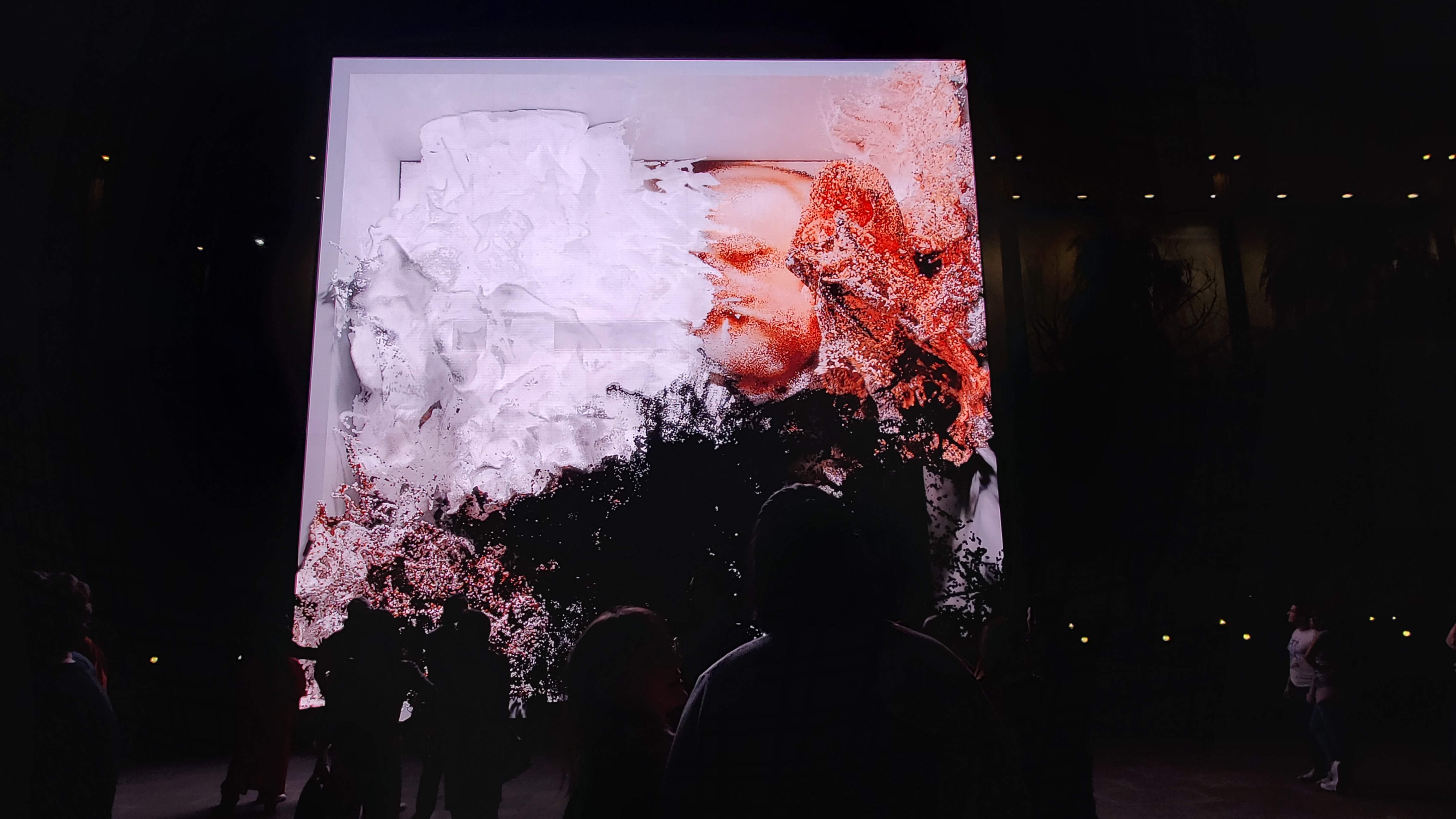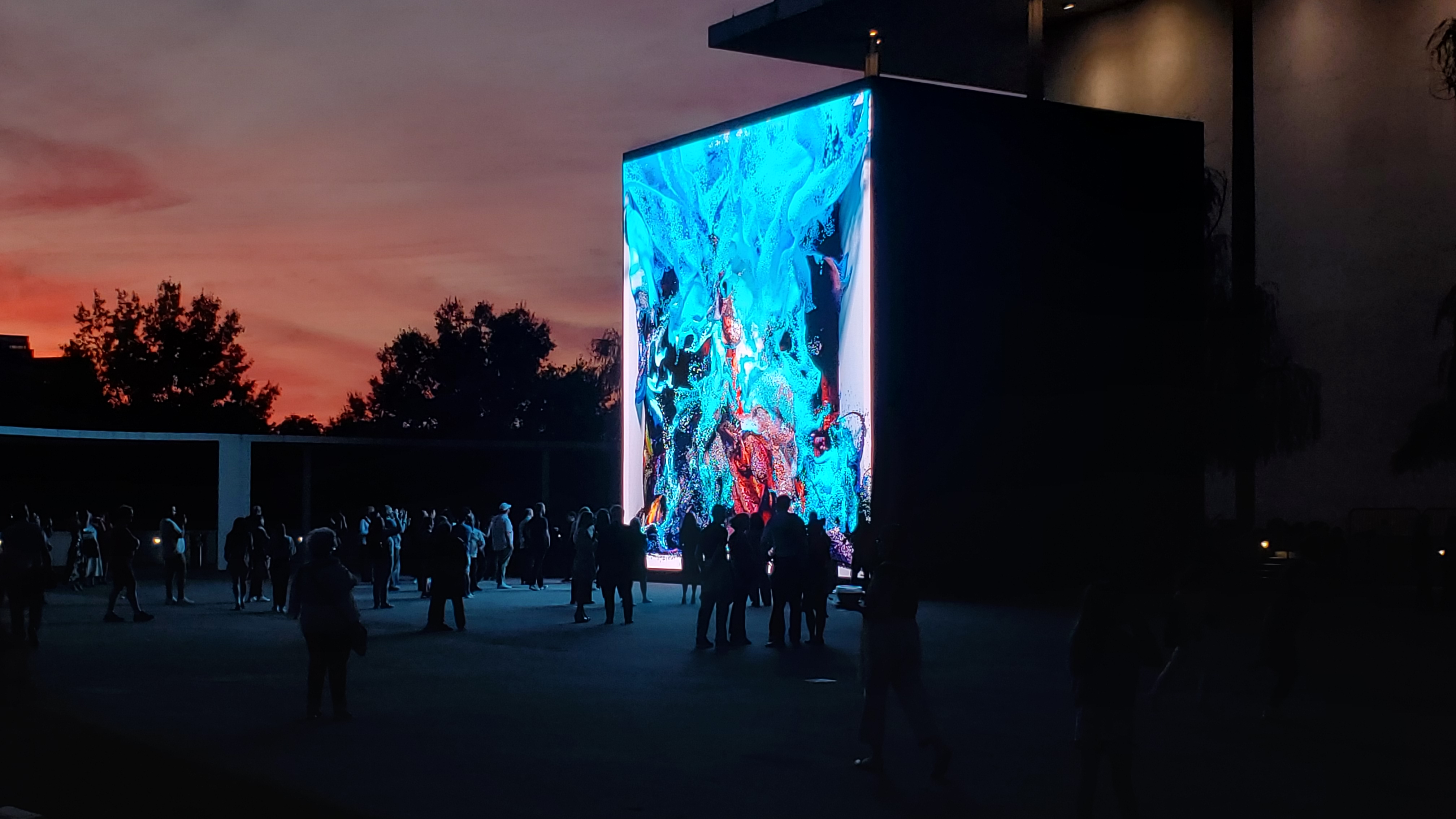UR LOCAL CYBORG
UR LOCAL HATER on Refik Anadol
19th Sep 2024
As UR LOCAL HATER of Refik Anadol’s work, when I heard he debuting an exhibit in D.C., I knew I had to see it for myself.

I’ve only experienced Anadol’s work online—though videos, social media posts, and undergrad presentations on the state of the new media world—but I’ve always been skeptical of the hype. I could never explain why I disliked his work so much, but a couple of years ago, I read a critique of his installation at the MoMa that has helped me verbalize my distaste. For a critique in e-flux journal, R.H. Lossin argues that “Unsupervised” (2022) is propaganda for surveillance, invisibly harvesting data from its viewers to create an experience that is unseeming, meditative, ambiguously aesthetic. Something about the unseemingness of Anadol’s work bothered me: it felt too easy, too superficial to merit such acclaim, but everyone seems to like it. The propaganda works.
But I’ve never seen an Anadol piece in person, and I thought maybe I’d give him the benefit of the doubt. So on September 4, I pulled up to the REACH—an outdoor plaza on the roof of the Kennedy Center—for the United States premiere of Anadol’s installation “Dvořák Dreams.”
After five minutes on the lawn, I decided I’d seen all that needed to be seen of the installation and that the food trucks would be the best part of the night.
It was pretty much what I expected from online: a massive LED display of looped AI-generated video. As with many of Anadol’s LED installations, he plays with the image of a “frame” built into the flat screen: his visuals morph from one form to another using particles that bounce like waves against the screen’s illusory “frame,” colliding with an imaginary panel that acts as the installation’s fourth wall. It looked pretty cool, actually. It got me thinking about how to re-create that effect in TouchDesigner. But what I found most disappointing about the piece was the complete lack of anything to do with the composer’s life or music.
“Dvořák Dreams” bears the name of a classical Czech composer whose most famous work, “New World Symphony,” notably derives from African American and Native American spirituals. After Antonin Dvořák (1941-1904) came to New York in 1892 to direct the National Conservatory, Dvořák learned of spirituals such as “Swing Low, Sweet Chariot” from his assistant H.T. Burleigh (1966-1949), a Black classical composer from Pennsylvania. Enamored and impressed with the music, Dvořák eventually declared “Negro melodies” the foundation of any “serious and original school of composition… in the United States.”
Whether we condemn his appropriation or praise it as radical for his time, Dvořák was a precedent to the likes of Elvis Presley and Led Zeppelin, white musicians who lifted their success from the uncredited heritage of Black musical traditions. Yet Anadol’s installation flattened the composer’s repetoire and influences with generic electronic ambiance. Anadol created the soundscape by training an AI model on archival Dvořák recordings, and the sounds of New York City and Prague, yet none of this I would have known if I hadn’t read the piece’s description. The only visible nod to Dvořák at all was an AI-generated segment bearing his image, conducting an AI-generated opus with blurry AI-generated hands.
If this was a commentary on the eploitative origins of both AI and Western music, well, the message didn’t come across.
A small monitor beside the installation claimed that “Dvořák Dreams” was an homage to “cultural heritage and creative innovation.” To claim “cultural heritage” while overlooking the influence of historically oppressed peoples on Dvořák’s most famous work is oversight enough. But beyond that, walking away from the installation, I would never have even known that Dvořák was from Prague.

Recently, I’ve realized that my need to find deeper meaning in art has prevented me from being creative at all. College trained me to view artworks as embodiments of history, applications of theory, metaphors for the human experience. Sometimes, it’s just not that deep. No need to be so holier-than-thou.
I respect Refik Anadol for attaining commercial success and worldwide influence as an artist, and I respect his installations as an introductory lesson to the new media world. I’m just biased because I’ve sat through so many student “as-our-first-assignment-research-a-piece-of-new-media-art” presentations about the same old shit that he does. But then again, introductory lesson. If seeing “Dvořák Dreams” turns someone on to the new media world for the first time, and they go on to create cool things, I can’t complain about that.
But I still stand by my opinion that the D.C. sunset stole the show.

Dvořák Dreams by Refik Anadol was on display at the Kennedy Center’s REACH plaza from Sept. 4-24. Admission: free.
← Back to all posts